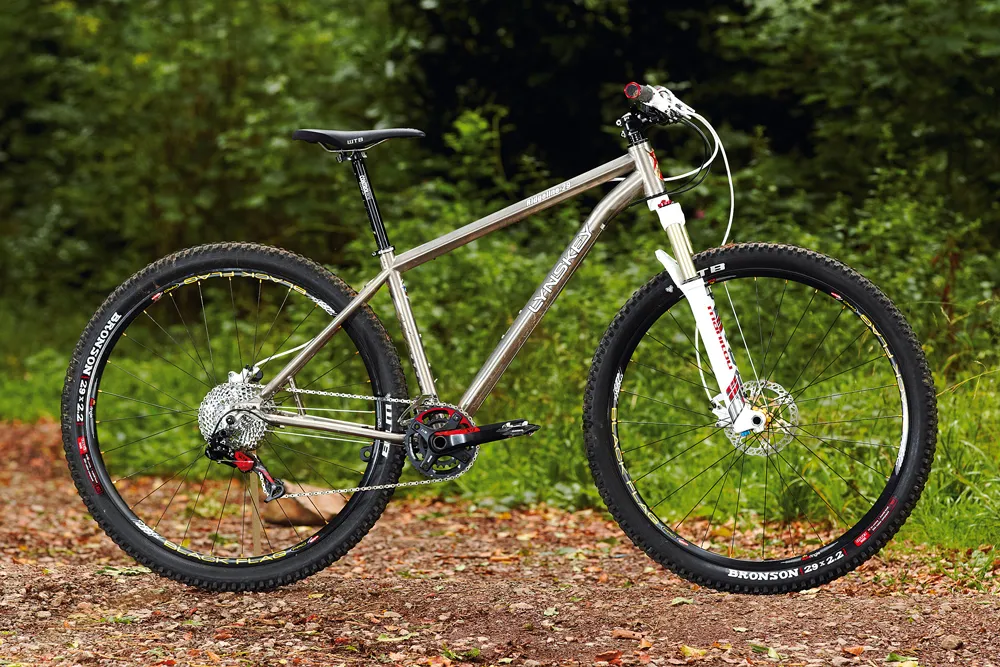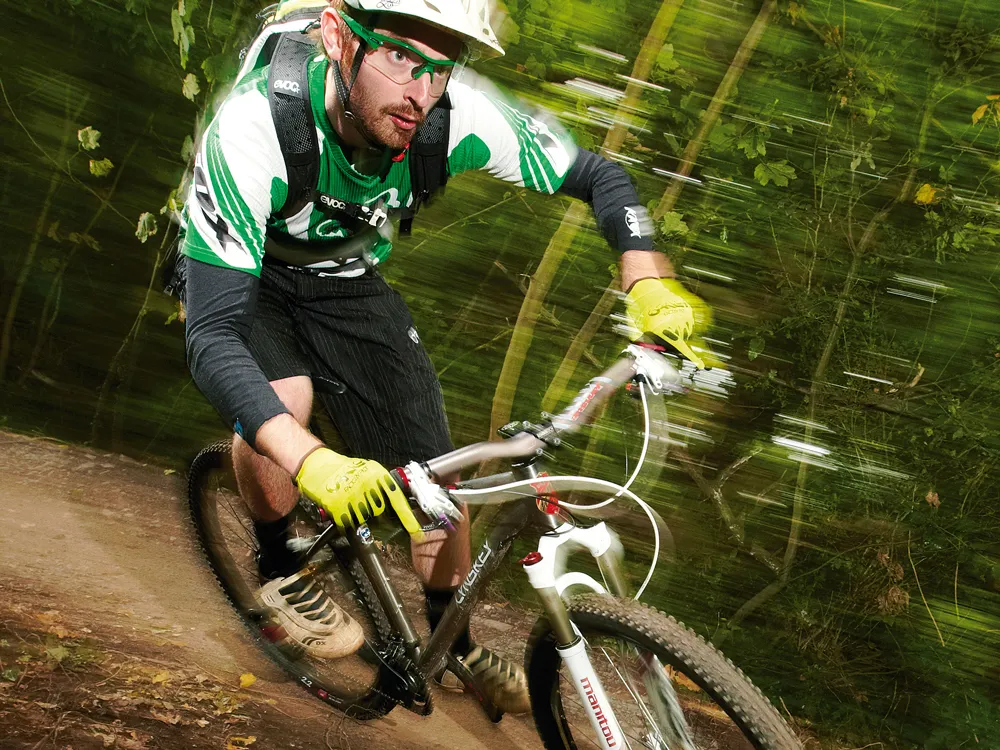Lynskey's Ridgeline 29 is craftsman-built in North America and, at the same price as some steel frames, offers great value – you could easily pay a lot more than this for a titanium frame with less heritage. Its stout chassis makes for confident handling.
Ride & handling: Agile 29er – just don’t expect a Ti ride feel
You won’t be far down the trail on the Ridgeline before you notice that it doesn’t match up to what you’ve been led to believe a titanium frame will feel like. The legendary idea of a ‘springy’ titanium ride came about mainly because early bikes constructed from the material were made out of tubes like drinking straws. That’s clearly not the case with the Lynskey.
There are a lot of big tubes in there. Mix in a 20mm through-axle and you’ve got a stout, accurate bike combined with low weight and (largely thanks to fat tyres on big wheels and a skinny seatpost) plenty of comfort. If this was our bike we’d ditch the Answer ProTaper bar for something flatter and not quite so wide, and probably pop an ever-so-slightly longer stem on too. That’s not a sentence you’ll see in a bike test all that often.
There’s nothing inherently wrong with ProTapers but the Ridgeline’s front end is already pretty high without putting a riser bar on. It’s also a fundamentally fast-handling bike – thanks in no small measure to the generous offset on the Manitou fork. And the cockpit setup makes it light on the helm too, which isn’t always a comfortable combination.
The Ridgeline comes as a frame only, so what bits end up bolted to it are entirely up to you. UK importers Hotlines kitted our test bike out with things from other companies whose goods they distribute – Manitou, Hayes, Sun Ringle and WTB. The Manitou Minute 29 fork is something of a rarity but it’s actually pretty good. The 20mm through-axle with double pinch bolts either side feels a bit like a relic in the age of Maxles and QR15 but it certainly helps with stiffness.
Special mention for the 29in WTB Bronson tyres too – the chunky, fast-rolling tread is one of our favourites in its 26in version and the bigger one is great too. Wrapped around a Sun Ringle wheelset the Bronsons round out a solid yet light wheel package that helped disprove the idea that 29ers are hard to get up to speed.
Frame: Good value for a US-made titanium chassis; sliding dropouts and 44mm head tube deliver versatility
Chattanooga is one of the world’s most splendid place names. And the town is home to the titanium specialists Lynskey. Many years ago the Lynskeys founded Litespeed, one of the first titanium builders, eventually selling the brand. After a bit of thumb-twiddling, pretty much the whole family decided to start again. Lynskey now make bikes to other people’s designs – the Cotic Soda and Ragley TD:1 are both made by them, for example. But the Ridgeline 29 is all their own.
Titanium is pretty amazing stuff to build a bike from. It’s roughly the density of aluminium and stronger than steel, as well as being highly resistant to corrosion – no paint needed here. The downside is that it’s not the easiest stuff to work with because it’s harder than most cutting tools and remarkably difficult to bend. It’s also tricky to weld, being intolerant of oxygen contamination.
Despite all this, Lynskey have gone out of their way to manipulate the Ridgeline’s frame. As well as the obvious curve in the down tube, it’s flattened towards the bottom bracket while the top tube has a diamond cross-section. All the tubes at the front end are hefty pipes, with a 1.75in down tube being the most obvious fat one. The seat tube is significantly oversized too but an alloy sleeve inside the top means that the Ridgeline takes a conventional 27.2mm post.
Continuing with the big theme, the head tube uses the 44mm headset standard so you can use internal or external headset bearings to accommodate regular or tapered steerers. These should make the frame reasonably future-proof. At the back, chunky seatstays and chainstays swoop their way to tidy bullet-shaped end caps. The Ridgeline 29 is available in two versions: the VF has conventional rear dropouts while the SL we tested has adjustable sliding dropouts.
This allows you to easily tension the chain if you want to run the bike as a singlespeed. If you’re using multiple gears instead, the sliders also give you a bit of adjustability out back, although it’s not as much as you might initially think. Our test bike arrived with the dropouts in the middle of the slots but the rear wheel wouldn’t go any further forward without the tyre hitting either the chainstays or the front mech clamp. The 2.2in tyres on the test bike are on the big side – smaller boots would give more scope.

